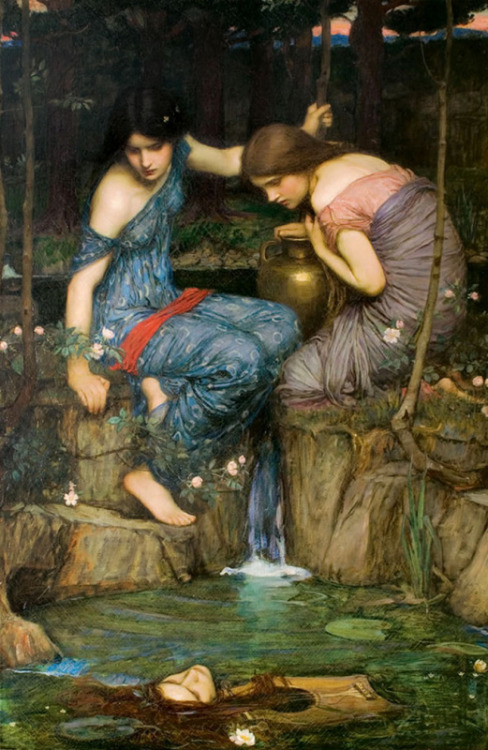#alexander henderson
Miss Margaret Henderson (1900), by J.W. Waterhouse
The Alexander Henderson family was of considerable importance at the turn of the century. He had gained a fortune by investing in real estate and the railway industry and together with two of his sons, they used their wealth for buying prominent art. Waterhouse became befriended with them, which resulted in several commissions and some people argue that all his later works were made to please the family. The portrayed figure is probably the 21-year old daughter, although no other images from her are known to exist and little is known about her life. Nowadays it is hard to imagine how patriarchal society was in those days.
The portrait is in many ways traditional: its warm colours against a dark background and the probably idealized beauty of the subject. Waterhouse gave it a personal touch by adding the rose to the garment. The expression of the woman, with a touch of fear, suggests her mind is with much bigger subjects than posing for a 30 years older painter.
Post link
Nymphs Finding the Head of Orpheus (1900), by J.W. Waterhouse
Orpheus played the lyre (small harp) with such skill and passion that he inspired even animals, trees and rocks. However, when he tried to revive his beloved wife Eurydice from the underworld, the helpers of Dionysus got so tired of his music that they killed him and threw his head and lyre into the river. The story is symbolizing the purity of art in a wretched society.
The two nymphs are the focal point of this painting. Their pale flesh stands out against the dark colours in the background. Only when one follows their line of sight, the head of Orpheus reveals itself in the water, next to a small waterlily. This is a trick Waterhouse used to avoid too much drama. The painting was displayed on the Royal Academy and sold to Alexander Henderson in 1901.
Post link


